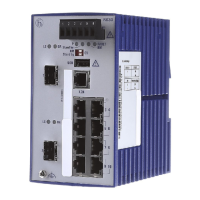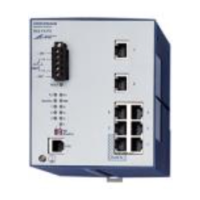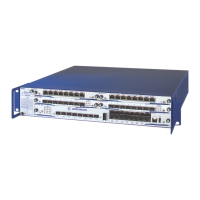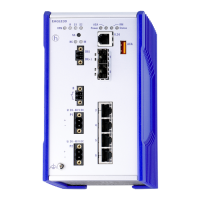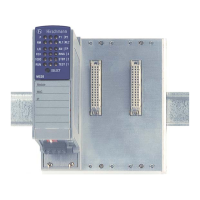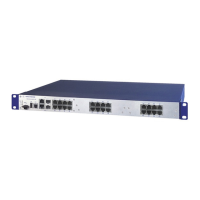Redundancy
92
6.2
Rapid Spanning Tree
RM Web L2B
Release
5.3
05/2012
6.2 Rapid Spanning Tree
With this dialog you can:
switch the Rapid Spanning Tree Protocol on/off
display bridge-related information on the Spanning Tree Protocol
configure device-related parameters of the Rapid Spanning Tree Protocol
set port-related parameters of the Rapid Spanning Tree Protocol.
Note: The Spanning Tree Protocol is a protocol for MAC bridges. For this
reason, the following description employs the term bridge for Switch.
Local networks are getting bigger and bigger. This applies to both the
geographical expansion and the number of network participants. Therefore,
it is advantageous to use multiple bridges, for example:
to reduce the network load in sub-areas,
to set up redundant connections and
to overcome distance limitations.
However, using multiple bridges with multiple redundant connections
between the subnetworks can lead to loops and thus loss of communication
across of the network. In order to help avoid this, you can use Spanning Tree.
Spanning Tree enables loop-free switching through the systematic
deactivation of redundant connections. Redundancy enables the systematic
reactivation of individual connections as needed.
RSTP is a further development of the Spanning Tree Protocol (STP) and is
compatible with it. If a connection or a bridge becomes inoperable, the STP
required a maximum of 30 seconds to reconfigure. This is no longer
acceptable in time-sensitive applications. RSTP achieves average
reconfiguration times of less than a second. When you use RSTP in a ring
topology with 10 to 20 devices, you can even achieve reconfiguration times
in the order of milliseconds.
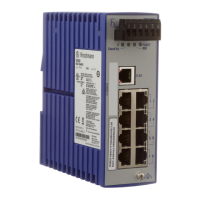
